
Mesostigmata is an order of mites belonging to the Parasitiformes. They are by far the largest group of Parasitiformes, with over 8,000 species in 130 families. Mesostigmata includes parasitic as well as free-living and predatory forms. They can be recognized by the single pair of spiracles positioned laterally on the body.
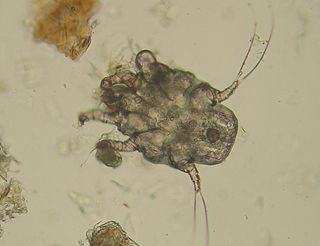
Astigmatina is a clade of mites in the superorder Acariformes. Astigmata has been ranked as an order or suborder in the past, but was lowered to the unranked clade Astigmatina of the clade Desmonomatides in the order Sarcoptiformes. Astigmatina is now made up of the two groups Acaridia and Psoroptidia, which have been suborders of the order Astigmata in the past. Astigmatina contains about 10 superfamilies and 76 families under Acaridia and Psoroptidia.

Histiostomatidae is a family of mites in the clade Astigmata.
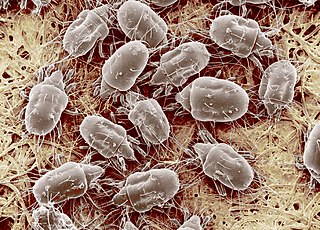
Tyrophagus is a genus of mites in the family Acaridae.
Acotyledon is a genus of mites in the family Acaridae.
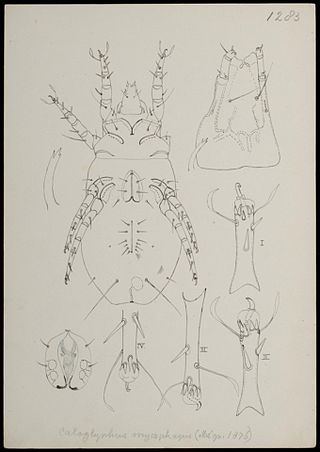
Caloglyphus is a genus of mites in the family Acaridae.
Cosmoglyphus is a genus of mites in the family Acaridae.

Rhizoglyphus is a genus of mites in the family Acaridae. It has a worldwide distribution and is often associated with the bulbs, corms or tubers of plants.

Sancassania is a genus of mites in the family Acaridae that contains more than 80 different species.
Schwiebea is a genus of mites in the family Acaridae. It is among the largest in the family with over 60 species.

Thyreophagus is a genus of mites in the family Acaridae.
Viedebanttia is a genus of mites in the family Acaridae.
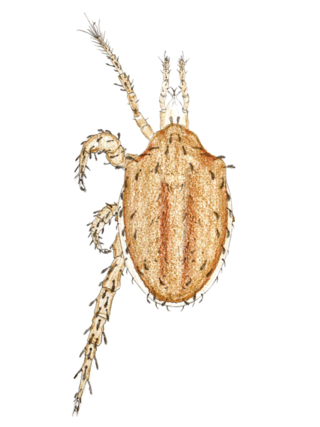
Macrochelidae is a family of mites in the order Mesostigmata.
Ascidae is a family of mites in the order Mesostigmata.

Phoresis or phoresy is a non-permanent, commensalistic interaction in which one organism attaches itself to another solely for the purpose of travel. Phoresis has been observed directly in ticks and mites since the 18th century, and indirectly in fossils 320 million years old. It is not restricted to arthropods or animals; plants with seeds that disperse by attaching themselves to animals are also considered to be phoretic.

Tyrophagus putrescentiae is a cosmopolitan mite species. Together with the related species T. longior, it is commonly referred to as the mould mite or the cheese mite. The genus name translates from Greek to "cheese eater."
Chaetodactylus is a genus of parasitic mite primarily associated with solitary bees with over 20 species.

Glycyphagidae is a family of mites in the order Astigmata. There are more than 25 genera and 100 described species in Glycyphagidae.

Winterschmidtiidae is a family of mites in the order Astigmata.
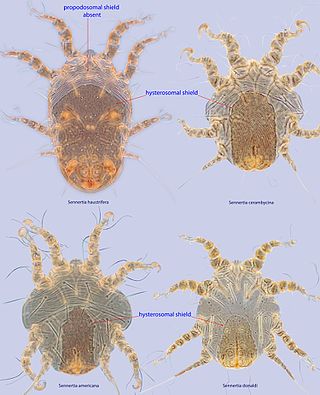
Sennertia is a genus of mites in the Chaetodactylidae family. There are more than 70 species. Some of these mites are parasites or commensals of bees, but the presence in some bees of specialized structures for carrying mites (acarinarium) indicates the mutualistic nature of the relationship of some species. Most species of the genus Sennertia settle on adult bees as heteromorphic deutonymphs, but the species Sennertia vaga has no deutonymph and settle on adult bees in the eating adult stages. Reproduction and feeding occurs during resettlement. Most species occur on small carpenter bees (Ceratina) and large carpenter bees (Xylocopa) of the family Apidae. A few species are associated with Centris (Paracentris) in the Neotropics.

















